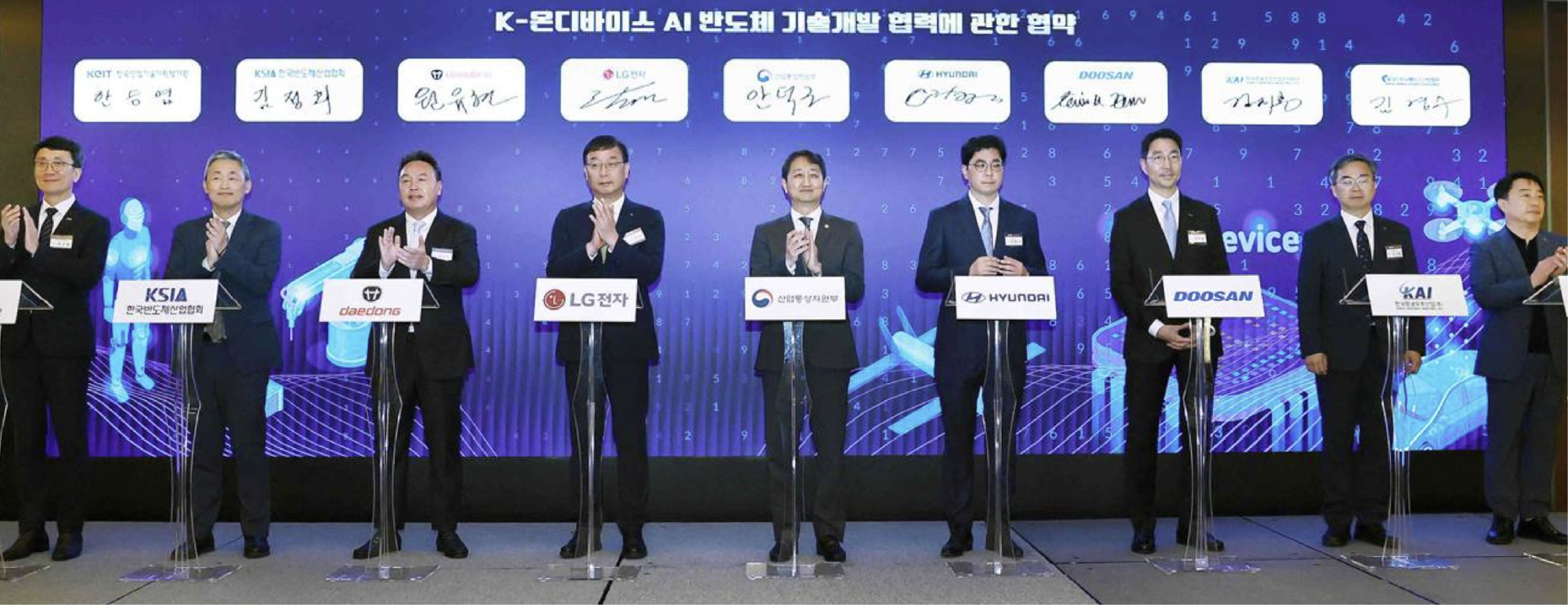Doosan Robotics Signs MoU for 'K-On-Device AI Semiconductor Development Collaboration'
2025. 05. 20
On May 20, Doosan Robotics announced that it signed a memorandum of understanding (MoU) for the "K-On-Device AI Semiconductor Development Collaboration" at the AI Semiconductor Collaboration Forum held at The Westin Chosun Hotel in Seoul.
Participants included the Ministry of Trade, Industry and Energy (MOTIE), the Korea Evaluation Institute of Industrial Technology (KEIT), and major demand-side companies such as LG Electronics, Hyundai Motor Company, Daedong, and Korea Aerospace Industries (KAI), along with key industry associations including the Korea Fabless Industry Association and the Korea Semiconductor Industry Association.

This government-led agreement aims to establish a foothold in the emerging Physical AI market, with projects worth approximately KRW 1 trillion to be executed over the next five years.
As the AI semiconductor market shifts from high-cost, cloud-based systems toward lightweight, on-device applications, the participating companies and institutions will collaborate on R&D projects to develop AI semiconductors optimized for four major industries, automotive, IoT and home appliances, machinery and robotics, defense.
Doosan Robotics, representing the machinery and robotics sector, has participated in the project planning phase from the outset. The company will work closely with fabless firms throughout the entire development pipeline—from joint development and validation of AI semiconductors and software, to integration and mass production—helping establish a virtuous cycle of demand and supply, and actively supporting Korea's AI semiconductor development efforts.
A Doosan Robotics spokesperson stated, "In the machinery and robotics sector, there is a growing need for AI semiconductors that are not only power-efficient and hyper-connected, but also capable of reasoning and executing complex tasks in unstructured environments. Through this collaboration, we aim to further strengthen our technological competitiveness."

